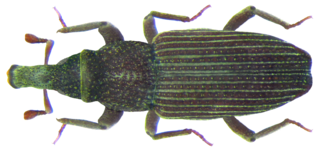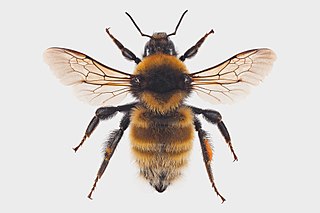
The International Union for Conservation of Nature (IUCN) is an international organization working in the field of nature conservation and sustainable use of natural resources. Founded in 1948, IUCN has become the global authority on the status of the natural world and the measures needed to safeguard it. It is involved in data gathering and analysis, research, field projects, advocacy, and education. IUCN's mission is to "influence, encourage and assist societies throughout the world to conserve nature and to ensure that any use of natural resources is equitable and ecologically sustainable".

The International Union for Conservation of Nature (IUCN) Red List of Threatened Species, also known as the IUCN Red List or Red Data Book, founded in 1964, is an inventory of the global conservation status and extinction risk of biological species. A series of Regional Red Lists, which assess the risk of extinction to species within a political management unit, are also produced by countries and organizations.

The conservation status of a group of organisms indicates whether the group still exists and how likely the group is to become extinct in the near future. Many factors are taken into account when assessing conservation status: not simply the number of individuals remaining, but the overall increase or decrease in the population over time, breeding success rates, and known threats. Various systems of conservation status are in use at international, multi-country, national and local levels, as well as for consumer use such as sustainable seafood advisory lists and certification. The two international systems are by the International Union for Conservation of Nature (IUCN) and The Convention on International Trade in Endangered Species of Wild Fauna and Flora (CITES).

An IUCN Red List Critically Endangered species is one that has been categorized by the International Union for Conservation of Nature as facing an extremely high risk of extinction in the wild. As of December 2023, of the 157,190 species currently on the IUCN Red List, 9,760 of those are listed as Critically Endangered, with 1,302 being possibly extinct and 67 possibly extinct in the wild.

A data deficient (DD) species is one which has been categorized by the International Union for Conservation of Nature (IUCN) as offering insufficient information for a proper assessment of conservation status to be made. This does not necessarily indicate that the species has not been extensively studied, but it usually indicates that little or no information is available on the abundance and distribution of the species. It can also indicate uncertainty about the taxonomic classification of an organism; for example, the IUCN classifies the orca as "data deficient" because of the likelihood that two or more types of the whale are separate species.

A species that is extinct in the wild (EW) is one that has been categorized by the International Union for Conservation of Nature as only consisting of living members kept in captivity or as a naturalized population outside its historic range. Classification requires exhaustive surveys conducted within the species' known habitat with consideration given to seasonality, time of day, and life cycle. Once a species is classified as EW, the only way for it to be downgraded is through reintroduction.

Dryophthorus is a genus of true weevils in the family of beetles known as Curculionidae. There are at least 60 described species in Dryophthorus.

Bombus distinguendus, the great yellow bumblebee, is a species of bumblebee found in Austria, Belgium, the Czech Republic, Denmark, Finland, France, Germany, Great Britain, Hungary, Ireland, Lithuania, Poland, Romania, Slovakia, Switzerland, northern Russia, and North America.

Attulus distinguendus, also called the distinguished jumper spider, is a species of spider in the family Salticidae, the jumping spiders. Until 2017, it was placed in the genus Sitticus. It inhabits central and western Europe, the Palaearctic region, and eastern Asia.
Copelatus distinguendus is a species of diving beetle. It is part of the genus Copelatus of the subfamily Copelatinae in the family Dytiscidae. It was described by Régimbart in 1903.
Calathus distinguendus is a species of ground beetle from the Platyninae subfamily that can be found in Bulgaria, Greece, Kosovo, Moldova, Montenegro, North Macedonia, Serbia, Voivodina, southern part of Russia and European part of Turkey. It is also found in Georgia, Asia Minor, Caucasus, and Crimea. It have 1 millimetre (0.039 in) long genitalia.
Acanthoscelides distinguendus is a species of leaf beetle in the family Chrysomelidae. It is found in Central America and North America.
Dryophthorus americanus is a species of beetle in the family Dryophthoridae. It is found in North America.
Saprinus distinguendus is a species of clown beetle in the family Histeridae. It is found in North America.
Lariophagus distinguendus is a idiobiont ectoparasitoid hymenopteran in the family Pteromalidae, superfamily Chalcidoidea. It parasitizes small beetle larvae concealed in seeds, as well as prepupae and pupae in their cocoons. It is used for the biological control of several beetle pests of stored products, particularly in central Europe, where it is produced commercially and distributed by at least 11 companies.






